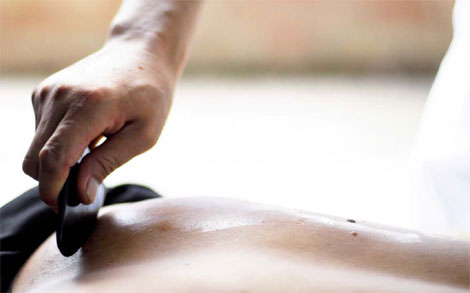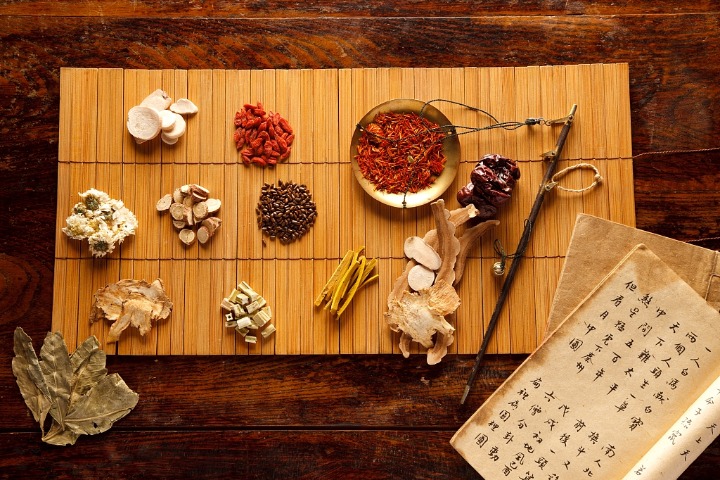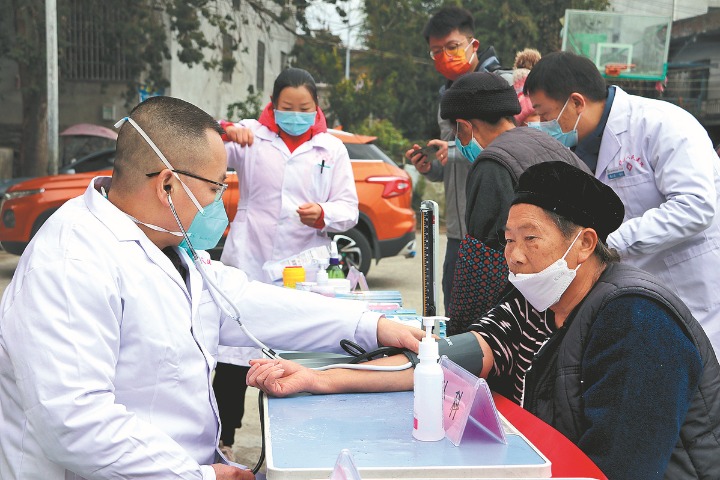TCM therapy: Guasha

Guasha, meaning to "scrape away illness", involves using tools such as bian stone, jade, or ox horn with lubricant liniment to scrape and rub parts of the patient's skin repeatedly in one direction. The aim is to activate blood circulation to dissipate blood stasis, based on TCM theory.
Historical records on guasha go back to the Paleolithic Age. When people fell sick or became unconscious, hands or stones were used to rub parts of their body to help alleviate the symptoms of disease.
Guasha has long been a folk therapy widely used by the ancient Chinese. In the Ming Dynasty (1368-1644), the treatment was systematically written into major medical records.
The use of stones to scrape the skin and treat diseases has been gradually improved throughout the ages, in line with TCM practices.
Guasha therapy is closely related to the crucial TCM theory of meridians and collateral. The theory provides not only the theoretical foundation for diagnosis, but also guides treatments such as acupuncture, massage, cupping and guasha.
Guasha treatment is not painful, adherents say. According to practitioners, as the body is scraped it pushes a build-up of fluid ahead of it, and after it passes, it leaves an indention or vacuum behind that draws toxins out to the surface of the skin from deep within the tissue.
The toxic fluid (sha), floods to the surface and can be seen in small red, deep purple or light green pools of blood. It is also often hot on the area where the "toxic heat" is extracted.
The meridians and collaterals are like the pathways in which the flow of qi and blood circulate. They form a specific network that communicates with the internal organs and limbs and connects the upper to the lower and the exterior to the interior organs of the body.
The color of the sha is both diagnostic and prognostic. Light-colored sha indicates blood deficiency. If the sha is purple or black, the blood stasis is long-standing. Dark red sha can also indicate heat.
Guasha is also used whenever a patient has pain associated with an acute or chronic disorder, or when there is an aching or knotty feeling in the muscles, TCM practitioners say. It can be used to similarly treat and prevent the common cold, flu, bronchitis, asthma, as well as any chronic disorder involving pain, congestion of the flow of qi and blood.
Sha is raised primarily at the yang (positive) surface of the body, for example the back, neck, shoulders, buttocks, and limbs. Sometimes, guasha is applied at the chest and abdomen, according to the TCM diagnosis.
In most cases, the guasha patient feels an immediate change in consciousness from the treatment. Guasha motivates the blocked flow of qi and blood, and releases external sweating.
In modern medical terms, these fluids contain metabolic waste that has become congested in the skin surface tissues and muscles. Many consider it to be a valuable treatment for both external and internal pain, facilitating the resolution of both acute and chronic disorders.
Contraindications include hemophilia or bleeding disorders, leukemia, inflamed skin or open wounds. Weak elderly and those who are suffering from menstrual afflictions should also avoid the treatment.
There are two methods of guasha; and one is called tonifying therapy. The technique of scraping is slow, moderate and does not draw out sha each time.The other method, called purging therapy, involves heavy, fast rubbing and scraping to bring out as much sha as possible. This is the most common method and can be used to treat common ailments such as fever, influenza and apoplectic sequelae.
Please feel free to contact us by sending your questions to question@chinadaily.com.cn or commenting on China Daily app. We will ask experts to answer them.














